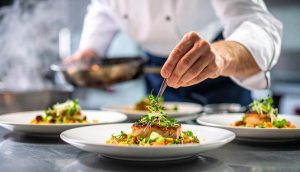Easy Guide And Basic Wine Knowledge For Beginners

There’s a lot more to do when you want to become a wine expert. The process is more than drinking a glass twice a week.
You have to know the basic vocabs surrounding the drinks, including the bouquets, tannin, aroma, and terroir. On top of this, you also need to recognize various flavors, know how to hold the glasses, and learn the right time when you have to drink it.
Fortunately, a lot of infographics are available to many connoisseurs out there. There are many topics covered, including how to make your own cellar where you can find more about on sites like https://winecellarcreations.com and where you can find experts for the materials needed for the project. You can also get information about the different grapes from specific regions in other countries.
Knowing More About The Bottle
When you are in a restaurant, and the waiter brings the bottle to you, you have to look at some things and learn how to recognize them. The name of the producer will be at the top of the label. The variety, types of grapes, region, and the year when the wine was made will follow. The alcohol content will be the last one that you’ll see on the label.
Different bottles need various temperatures to preserve the flavors better. For the dark red varieties, the temperature should be between 20 to 25°C, while rosé ones are served chilled at about 13°C. Sparkling and white wines should be cold, and they should be in a fridge where the temperature is 5°C.
The Type Of Glasses
Various types of glasses will benefit the flavor more. You won’t need all of them inside your home, but when picking the restaurant’s glasses, it’s important to choose one that will complement the flavor better. It’s best if you have port glasses and champagne flutes at home to serve the guests. The glass for the Pinot Grigio is different from champagne. You can find more information about this on many sites today.
If you want to look like an expert while swilling the glass, hold it by the stem. This is essential in chilled wines because your hands’ heat can be transferred to the bowl, which can alter the taste. Gently rotate your wrist until you can produce swirls around the bowl of the glass. You can allow the smell to fill the bowl and identify different flavor profiles in the process.
The colors vary, and they are not exclusive to white, red, and pink. The hues and shades can range a lot, indicating the type and age of the wine. You may have gotten a full-bodied, light, or a different kind of rosé based on the color alone. However, if you got a cloudy one, you may want to change it with something else or throw it out, as this indicates that it has gone bad.
The alcohol content will range from 11% to 14%. The lighter varieties will have lesser alcohol, while the redder ones will undoubtedly have more. Make sure to drink white and lighter-colored wines within 3 days after you open them. The darker and bolder ones may last up to 9 to 10 days.
About Aromas
If you want to sound cool in front of your family and friends, you need to know the aroma of your wine. This can range from spicy, sweet, fruity, floral, or mineral. The underlying notes with fruity flavors can include grapes, fig, raspberries, orange, mangoes, lime, lemon, banana, apricots, etc. The woody and sweet taste can describe the scent of oak, chocolate, toffee, butterscotch, vanilla, honey, cedar, and more.
When it comes to the most confusing part, many experts may get lost when it comes to tannins. These are the textural elements that make the drinks dry to the mouth. You may find it interesting that tannin is found in seeds, leaves, wood, plants, and fruit skins and they are naturally occurring polyphenols in grapes. They add astringency, bitterness, and complex flavors to the bottles.
Tannins can be found in wood barrels where the wine has been aged in, or they can come from the grapes’ stems, seeds, and skins. You can read more about tannin on this site here. They are commonly found in red wines, but the whites can also have them, mostly if they have been aged in a wooden barrel.
You may want to sound like a true expert when it comes to wines. The terroir is another vocabulary that you should learn. True connoisseurs are familiar with them, and there’s even a bar in New York City with this name. The terroir refers to the set of factors like topography, soil type, and climates that influence where the grapes were grown. This factor affects the flavors in a big way, and they make each bottle a unique one.
Understanding a Lot More
Several researchers discovered that the more complex the description of the white or red wine, they will actually taste a lot better. This makes sense in a way since the more vocabs you have on the label, the brain will be better in discerning those subtle flavors that are consisting of the wines.
When you want more help in recognizing the red from the white varieties, you can find a lot of information about them on online forums. They will look different at first glance, and they’ll taste more differently, too. The overall taste is described as bitter, and there’s puckery or a dry feeling in the mouth, which is thanks to the elements mentioned before, which is tannin.
Many wines will also get their colors through tannins, and when the vintner allows the skin of the grapes to sit in the juice as the fermenting process is ongoing. The drinks with little to no contact with grape skins will end up whiter or more pinkish. The more wine is fermented, the more they will end up redder.







